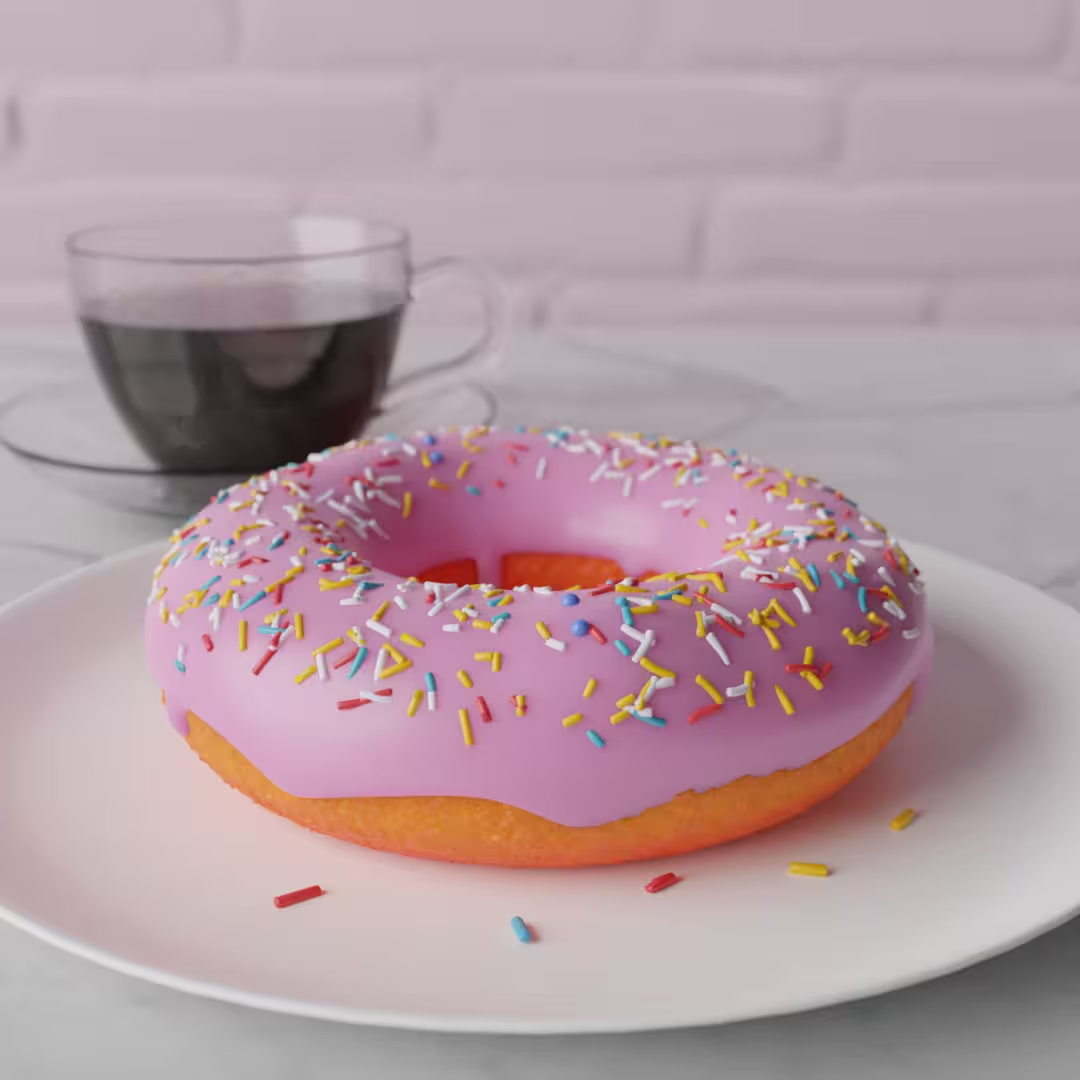Immersive web
Lately, I’ve been playing around with 3D elements to refresh my memory on how to implement certain things in Three.js. More importantly, I’ve been exploring the current state of WebGPU.
Navigate to "Story" Story
One or two years ago, I was deeply involved in creating immersive experiences within the browser. That’s when I discovered Three.js, and my jaw dropped immediately at the possibilities it offered. It didn’t take long for me to stumble upon the Three.js journey, a course created by Bruno, which I quickly fell in love with.
Simultaneously, I delved into learning 3D modeling. A prominent resource for this was the Blender Guru. channel. I took a shallow dive into Blender, learning how to create my own donut—a quintessential beginner’s project. While I can’t say it was easy, I thoroughly enjoyed every moment. For a web developer, the experience provides a unique feeling of working in another dimension. What made it even cooler was the ability to import your own 3D models into Three.js if desired.
- Some of my silly projects can be found on Github.
- Also the previous version of this website utilized 3D with a custom shader. Give it a shot if you are interested.

Navigate to "WebGL" WebGL
So, that’s the little story of how I got into 3D. Now, let’s dive into some code. In my opinion, Three.js makes working with WebGL easy and readable. For every shape, there is a dedicated class. You simply instantiate it, add a Mesh, and place it onto the scene—voila!
const geometry = new THREE.TorusGeometry(RADIUS, TUBE, SEGMENTS, ARC);Navigate to "Shader" Shader
Later on, I wanted to leverage my newfound skills in my portfolio and bring it to life with something immersive. That’s when I came up with the idea to create a unique shader. Shaders are low-level programs for the GPU, usually existing in either a ‘fragment’ (coloring) or a ‘vertex’ (positioning) shader. Below, you can see the original shader that I used on my site. It’s made of an icosahedron, but every vertex is periodically displaced. This imparts a unique feeling to the shape, making it come alive.
uniform float time;
uniform float displacement;
uniform float elevation;
uniform float speed;
void main() {
float factor = abs(sin(time)) * displacement;
vec3 offset = normal * factor;
float waveY = abs(sin(position.y + time * speed)) * elevation;
vec3 newPosition = vec3(position + waveY * offset);
vec4 modelPosition = modelMatrix * vec4(newPosition, 1.0);
vec4 viewPosition = viewMatrix * modelPosition;
vec4 projectedPosition = projectionMatrix * viewPosition;
gl_Position = projectedPosition;
}Navigate to "3D model" 3D model
Okay, let’s dive into something more fun. As you can see, I often incorporate retro elements into my site. This time, let’s add a 3D model and render it in Three.js. Once again, Three.js comes to the rescue with a dedicated loader for this purpose. As with previous shapes, we aim to add it to the scene, but this time, it will be a Space Invader alien floating around.
const loader = new GLTFLoader().setPath(PATH);
loader.load(GLTF_FILE, (gltf) => {
obj = gltf.scene.children[0];
scene.add(obj);
});Navigate to "WebGPU" WebGPU
At the time of writing this post, WebGPU is still behind the flag. None of my browsers (Firefox, Brave) are able to run WebGPU-related programs. Even though there is already a WebGPU renderer in Three.js, once it’s widely supported, it will be easy to switch and enjoy the benefits.
If you are using Vite, then you also have to compile to ESNext because not all browsers support top-level await.
import WebGPURenderer from 'three/addons/renderers/webgpu/WebGPURenderer.js';
const renderer = WebGPURenderer({ canvas });